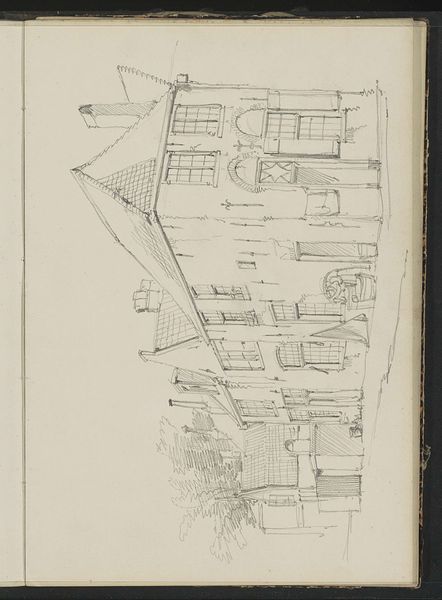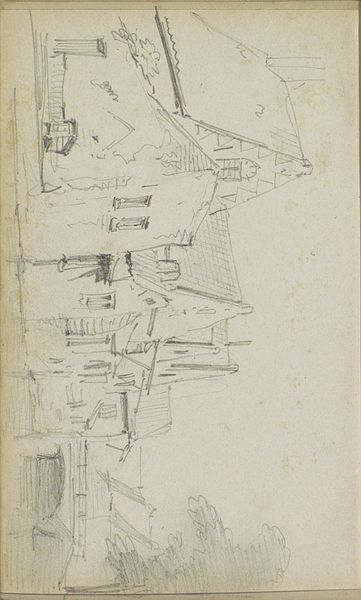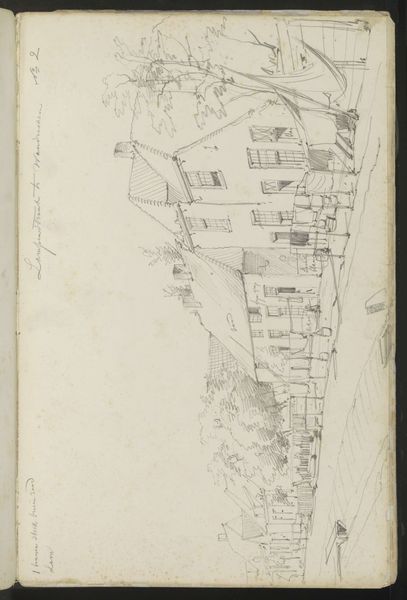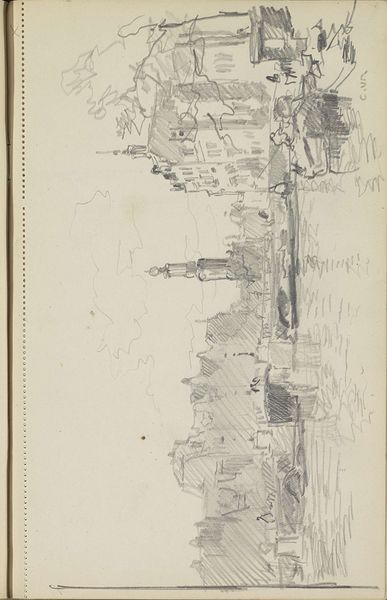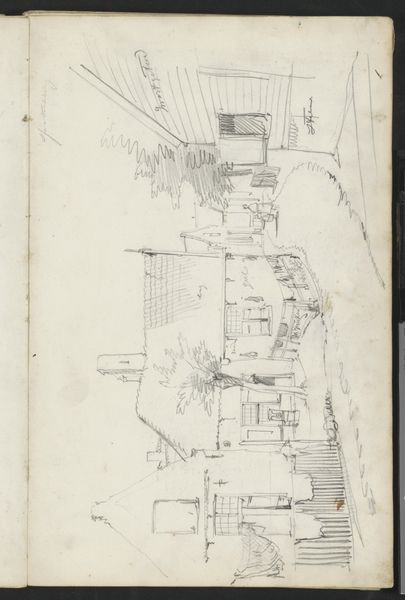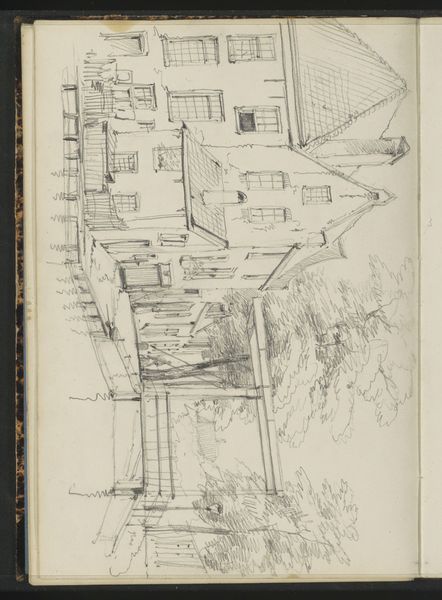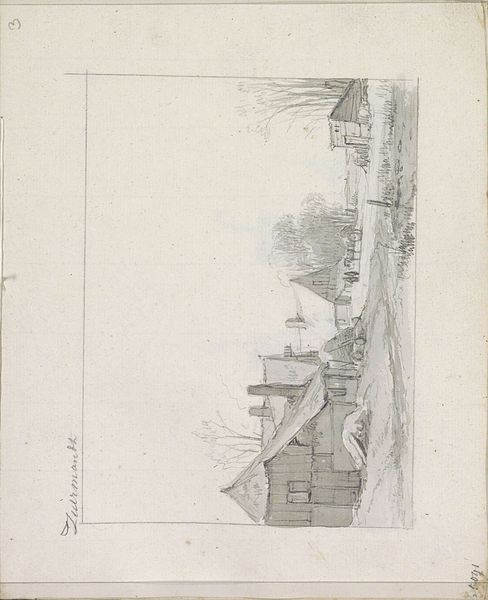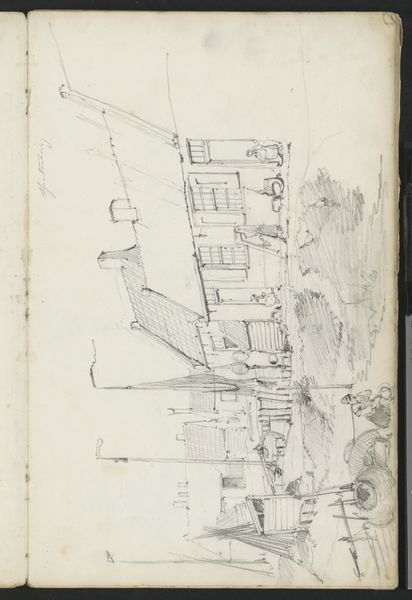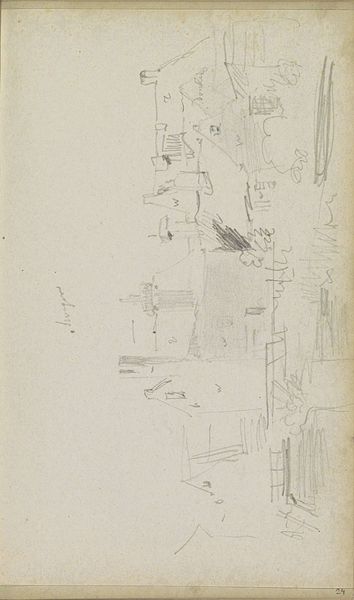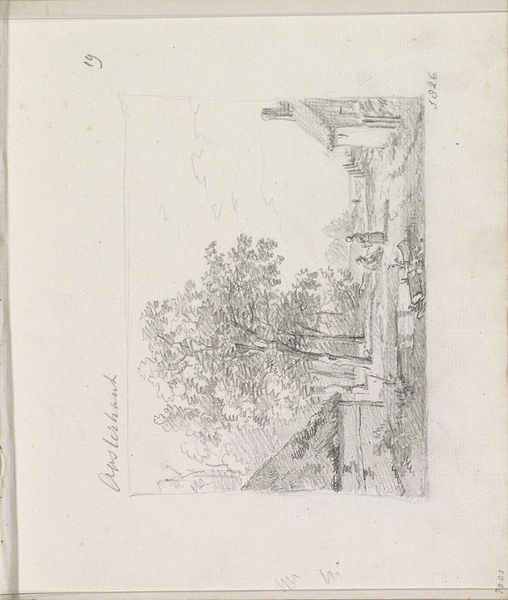
drawing, ink, pen
#
drawing
#
quirky sketch
#
pen sketch
#
sketch book
#
incomplete sketchy
#
landscape
#
personal sketchbook
#
ink
#
sketchwork
#
pen-ink sketch
#
pen work
#
sketchbook drawing
#
pen
#
sketchbook art
#
realism
Copyright: Rijks Museum: Open Domain
Curator: Take a look at this work titled "Boerenwoningen," or "Farm Houses," created by Willem Koekkoek around 1888. It's currently held in the Rijksmuseum collection. What are your initial impressions? Editor: The energy is palpable. It looks like a quick sketch done on the fly with pen and ink, raw and immediate. I’m drawn to the materiality of the lines themselves—so sparse, but they build a very specific sense of place. Curator: Absolutely. And those lines, although quickly rendered, describe a world steeped in history and tradition. Notice the steep thatched roofs, almost drooping with age. They evoke a sense of rootedness, don’t they? We associate such forms with images of steadfast communities. Editor: Rootedness yes, but what about the tools required? What type of paper and ink enabled him to capture such granular details quickly? The act of physically drawing these lines by hand suggests not only the availability of these resources, but their intended function. It shows a purposeful act of observing, consuming, and translating the surrounding social landscape. Curator: Good point! But also consider this from a symbolic perspective. Farmhouses, in Dutch art and culture, frequently appear to signify not just shelter, but also notions of simplicity, hard labor, and an almost biblical connection to the land. They stand as monuments of human resilience. Editor: But what does resilience actually look like? Notice the marks and striations, all likely the byproduct of the ink-making and drying processes. What are these houses *actually* made of? How does the physical labor impact their value as something "real" versus Koekkoek's rendition? Curator: The material speaks to the societal, I get it. Even in this sketch format, these dwellings connect us back to specific architectural styles characteristic of rural Holland at the time. These types of dwellings represent both practical living spaces and emblems of Dutch identity. Editor: I see them more as representations of resources-- where the ink and paper become symbols for accessibility and widespread distribution of certain mediums during this period. It highlights their everyday-ness as a product and their social-economic impact, even for sketching! Curator: I see your point, and yet I can't help but view those roofs as echoing a certain collective aspiration for permanence. An ideal of home, so to speak, regardless of its accessibility or creation. It touches upon something fundamentally human. Editor: Well, either way, analyzing its place in the canon forces me to be mindful about my consumption of history and our shared cultural heritage through art.
Comments
No comments
Be the first to comment and join the conversation on the ultimate creative platform.
